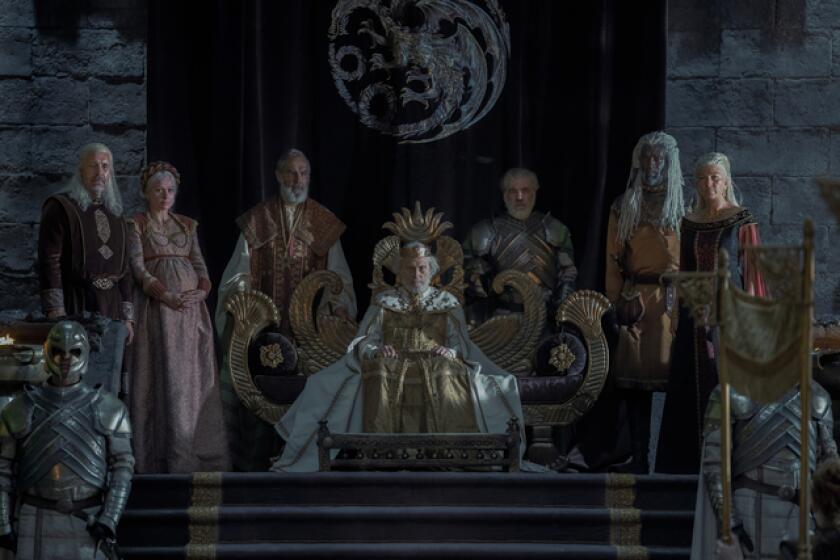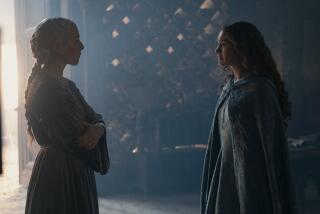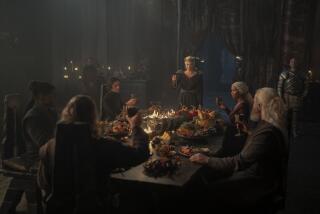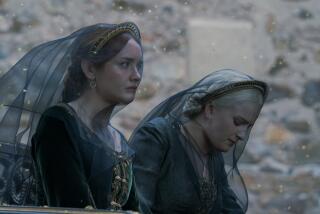It turns out ‘House of the Dragon’ is as homophobic as ‘Game of Thrones’
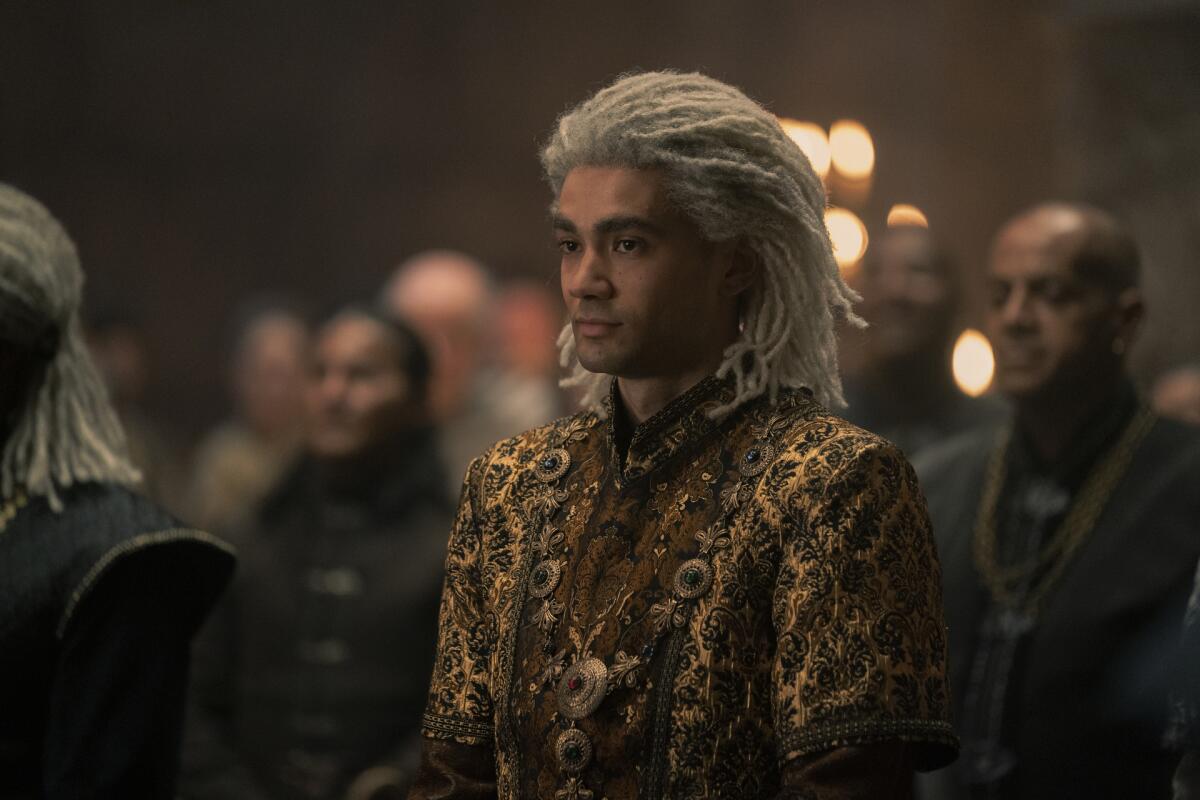
This story contains spoilers for Episode 5 of “House of the Dragon,” “We Light the Way.”
“House of the Dragon” has made it abundantly clear that Westeros is not the most progressive place. Its deep patriarchal traditions mean that even the Realm’s most powerful woman, Princess Rhaenyra Targaryen, cannot escape the duty to marry and eventually bear children.
The fifth episode of the HBO prequel series sees Rhaenyra (Milly Alcock) finally betrothed and then married to her cousin, Laenor Velaryon (Theo Nate). And in introducing Laenor’s story, “House of the Dragon” follows “Game of Thrones’” tradition of failing its LGBTQ characters.
Laenor, like Rhaenyra, is not actually interested in marriage — at least to a woman. Perhaps because the language to describe and define multiple sexual orientations doesn’t exist in Westeros, his family speaks only in euphemism, but Laenor is gay and his lover is Joffrey Lonmouth (Solly McLeod). And, just as in “Game of Thrones,” it’s not considered appropriate for a man to love another man openly in “House of the Dragon.” Laenor’s father, Lord Corlys, even calls it a phase.
Whether you’re new to Westeros or making a long-awaited return, here’s everything you need know about the ‘Game of Thrones’ prequel, updated weekly.
Lonmouth seems to be much more reasonable than the other Joffrey with whom “Game of Thrones” fans are familiar — perhaps even likable. Unfortunately, audiences will never know because he was brutally killed in this episode.
After identifying Criston Cole (Fabien Frankel) as Princess Rhaenyra’s lover, Lonmouth approaches the knight to tell him he’s figured out his secret. Ser Criston, in what could be described as a panic-driven rage, beats Lonmouth to death in response.
LGBTQ characters in the world of “Game of Thrones” — particularly queer men — have a long history of being ignominiously dispatched on the show. And while it can be argued that most characters in the series experience some form of horrific violence, queer characters’ deaths are often also marked by homophobic subtext that can’t be ignored.
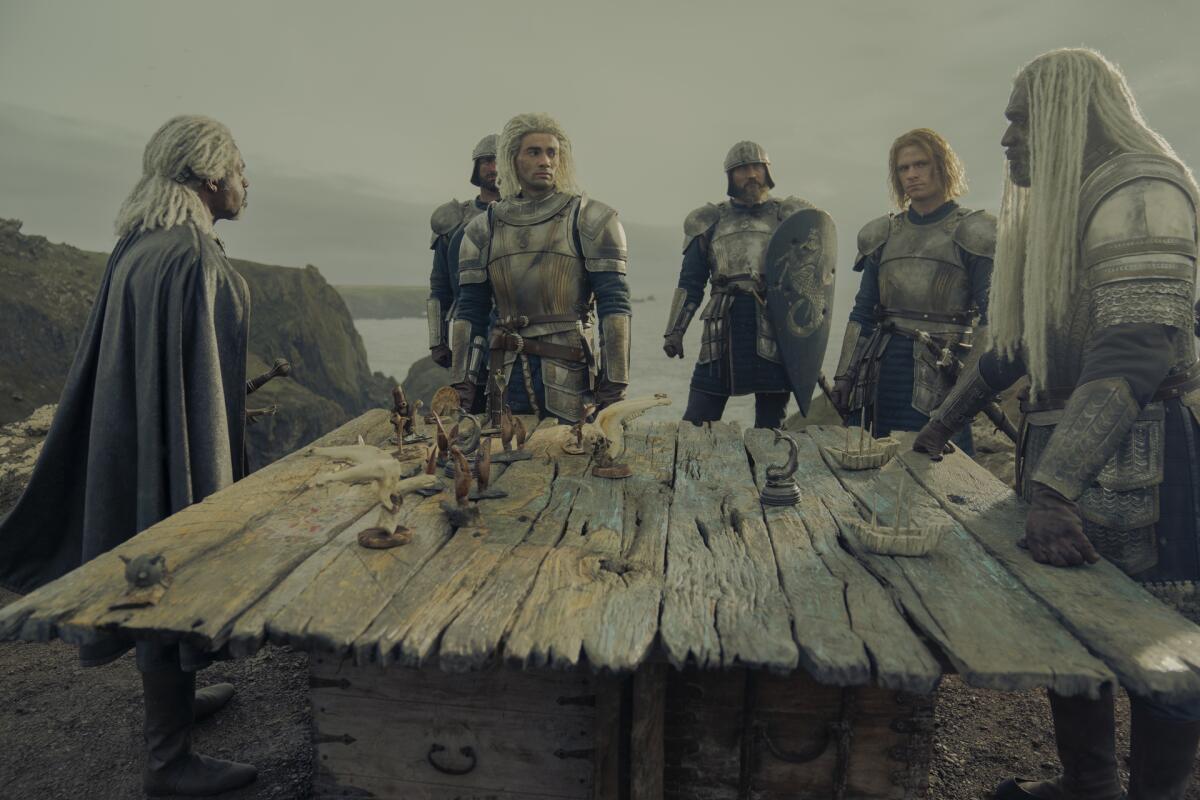
Renly Baratheon (Gethin Anthony) is the first queer character introduced in “Game of Thrones.” The well-liked youngest brother of King Robert Baratheon (Mark Addy), Renly is mainly defined by his sexual orientation, which, like Laenor’s, is an open secret. His lover is the dashing and capable knight Loras Tyrell (Finn Jones).
During the war to succeed King Robert as Lord of the Seven Kingdoms, Renly is killed by a mysterious shadow monster that was birthed by a priestess after she had sex with Renly’s other older brother. Heterosexual sexual intercourse created the weapon needed to slay Renly? How subtle.
Loras survives for quite a bit longer than Renly, but his death is even more horrific. He is arrested by a religious sect for the crime of being gay and having been intimate with other men. After confessing, Loras is forced to renounce his sexual orientation, his love for Renly and even his inheritance, but is killed moments later in a fire-bombing that wipes out the entire congregation.
After Renly’s death, “Game of Thrones” introduced Prince Oberyn Martell (Pedro Pascal) of Dorne and his lover, Ellaria Sand (Indira Varma). Upon making their way to King’s Landing, Oberyn and Ellaria both take male and female lovers and make clear that Dorne is more open and accepting of people’s sexualities. But to the other Westerosi nobles, this just underscores how “foreign” the Dornish are.
Oberyn’s tenure on the show is short-lived. While trying to avenge his sister, Oberyn’s eyes are gouged and skull crushed by the hands of his giant opponent. Another gruesome death for a man who unapologetically loved other men.
That the world of “Game of Thrones” and “House of the Dragon” routinely accepts incest but cannot let queer men survive, let alone thrive, is more than disappointing. It is problematic and harmful. And for those who will try to paint the homophobia as some sort of “historical accuracy,” “House of the Dragon” is a fictional show set in a world with dragons and ice zombies.
The queer women of “Game of Thrones” fared slightly better. Still, for all the women who push back against traditional gender roles to become warriors themselves, few were shown to be interested in women. Besides Ellaria, who is eventually captured by her enemy Cersei Lannister (Lena Headey), the show’s only other confirmed queer woman is Yara Greyjoy (Gemma Whelan), who was essentially raised as a son by her father in the absence of her brothers.
As Cersei’s prisoner, Ellaria is taunted and tortured and forced to watch her daughter die and decay; although she presumably died when the entire city was laid waste by a dragon, her ultimate fate was not shown on the show. Yara, who experiences her own share of war-related violence, is the only queer character who appears to have survived to the end of the original series. (It’s reasonable to conclude, of course, that the marginally better treatment of queer women stems from the same source as “Game of Thrones’” frequent background depictions of women having sex with women for the pleasure of men: the male gaze.)
For those who hoped that Laenor’s introduction might signal that “House of the Dragon” had learned the same lessons about LGBTQ representation as it has Daenerys’ arc, Lonmouth’s death is particularly troubling because of the way it evokes the homophobic “panic” that has long been used to try to defend violence against queer people. Cristen’s panic and rage are textually tied to his guilt and anxiety over breaking his oath as a member of the Kingsguard and his worry that this secret would be revealed. But the sequence still amounts to a man, after being approached by a gay man who knows his secret, beating the gay man to death.
From the first episode, the prequel series has been clear that the misogyny of the Realm is a mark against it. It’s past time the franchise does the same with homophobia.
More to Read
The complete guide to home viewing
Get Screen Gab for everything about the TV shows and streaming movies everyone’s talking about.
You may occasionally receive promotional content from the Los Angeles Times.
